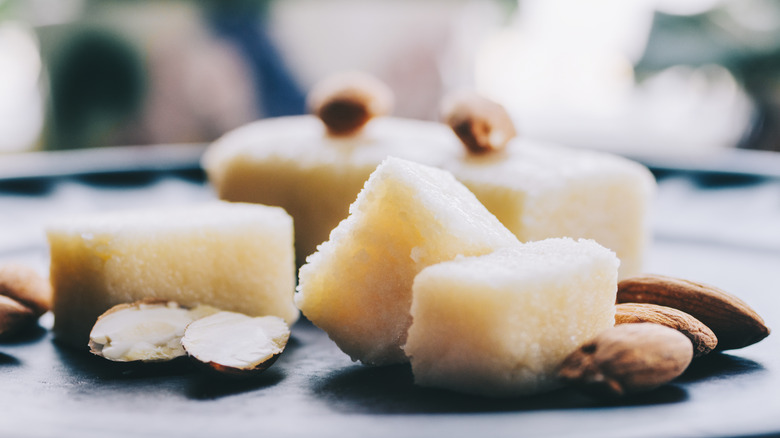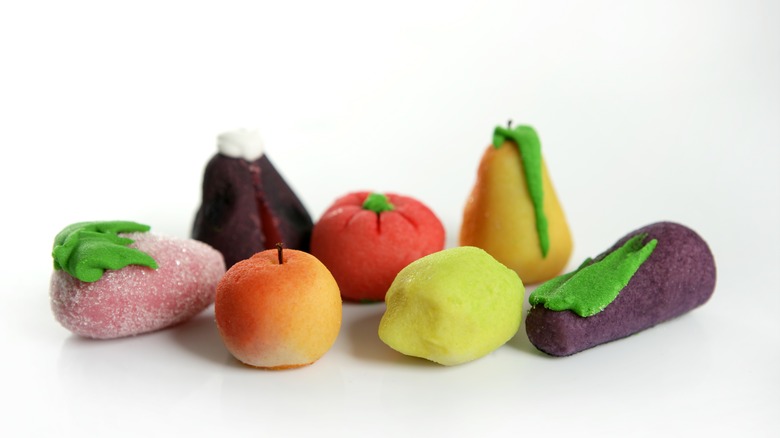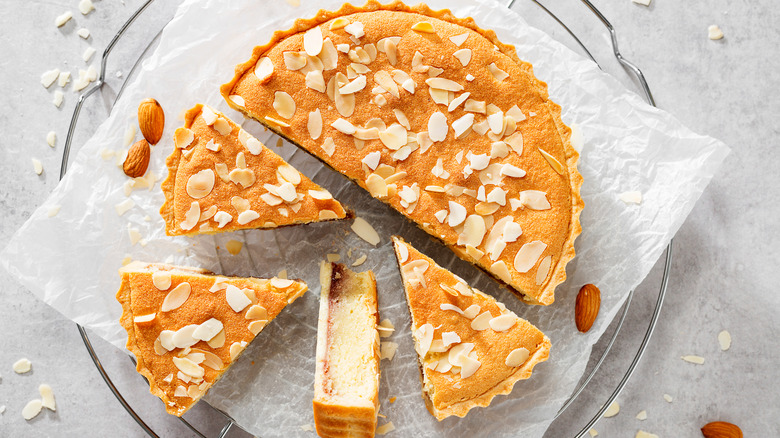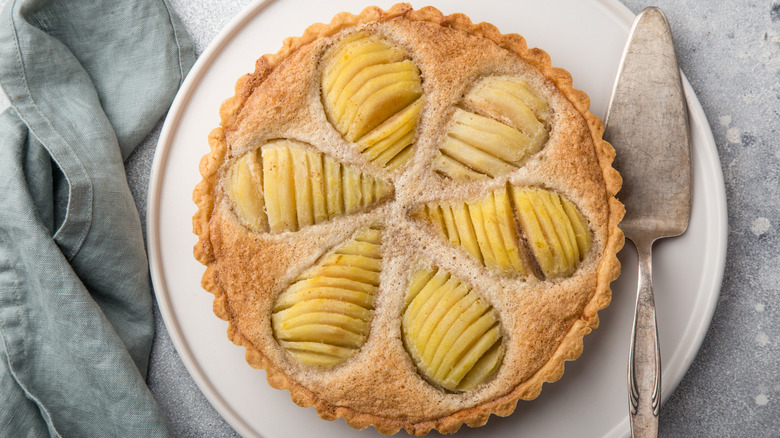The Difference Between Marzipan And Frangipane
Let's face it. People love almonds; we have for centuries (via NPR). They have a unique sweet nuttiness that makes them the perfect snack and has been domesticated by our ancestors since the Early Bronze Age in Jordan (via Vern's Toffee). California Almonds says that the nut has a rich history and has been mentioned in everything from ancient mythology to the Bible. Almonds grow throughout the Mediterranean and Central Asia and even played an economic role along the silk road. Looking back on the almond makes one appreciate it for so much more than its yum factor, but if we're honest, the delicious taste of the almond is why we love it today.
We use almonds as extracts, garnishes, candies, and of course, mouth-watering pastes to decorate, fill, and flavor our favorite desserts. Just look at the French Florentine cookie or the Gâteau Basque cake as glowing examples of the uses of almonds in baking today. Perhaps one of the oldest and most well-known uses for almonds is when they are used to make holiday favorites, such as marzipan and frangipane, which to many people's confusion, are not the same thing!
What is marzipan?
Let's make one thing very clear — if you do not like almonds, neither marzipan nor frangipane is going to be your go-to dessert. Marzipan is a dense candy made out of ground almonds, mixed with powdered sugar, and egg yolks. Needless to say, these little almond bites are compounded with the sweet nutty flavor and are very popular throughout Europe, often colored and molded into fruits and vegetables or other objects as dual holiday snacks and decorations.
Food Network explains that different nations have unique marzipan traditions, for example, in Germany marzipan is commonly made to look like a potato or loaf of bread while in France marzipan is widely covered in a chocolate glaze. It is wonderfully simple to make, an endeavor often taken upon by both the children and adults in a family during Christmas. The Institute of Culinary Education claims that though almonds have been enjoyed for thousands of years, marzipan is a rather young invention by comparison. The earliest written record of marzipan traces back to the 16th century, and a sweet kind of almond paste was mentioned in the widely beloved collection of short stories the "Arabian Nights."
What is frangipane?
You may not be as familiar with frangipane as you are with marzipan. If you don't already know, frangipane is less of a moldable paste and more of a custard-like filling. Martha Stewart states that this dessert also goes by the name frangipane cream, which may give you a better idea as to what this ingredient is used for. Frangipane is made from butter, eggs, sugar, a little flour, and (like marzipan) ground almonds. The butter and sugar are creamed together, and then the other ingredients are simply folded into the batch.
Bakepedia says that the custardy mix was created in the 16th century and named after Marquis Muzio Frangipani, who was an Italian nobleman experimenting with almond perfumes. He inspired French chefs to invent the cream using the aromatic sweet almonds that he loved so much. Now, frangipane is widely used in French and English tarts, pairing beautifully with various fruits and the flaky crust of pastry (via My Recipes).
The key differences between marzipan and frangipane
Now, obviously, there are some major differences between marzipan and frangipane. Primarily, Martha Stewart points out the fact that they are used in very different ways due to the difference in their consistency. Frangipane is traditionally a pastry or pie filling and is not eaten like candy during the yuletide season. The cream is much more custard-like and less fondant-like than marzipan and is never molded or shaped into small amusing trinkets or colored by anything other than the fruit it is usually baked with.
Another difference between the two is the ingredients. Not only are the almond recipes used for different desserts, but they are also made very differently. Marzipan relies on sugar and egg yolks to bind it up and is meant to be eaten anytime after it's assembled. Meanwhile, frangipane contains more than almonds and sugar. The recipe calls for whole eggs, butter, and flour, and if used in a French recipe, it will also have the addition of milk, which turns it into a custard before it's baked into a pastry. Frangipane is not meant to be eaten on its own and is instead made into things like Bondir's poached pear & frangipane tart.



